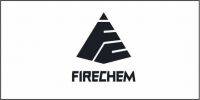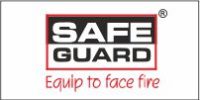 A Work Permit System (WPS) is a formalized safety process used in industries where hazardous tasks require controlled execution. It serves as a documented authorization that ensures specific safety measures are in place before performing high-risk activities. The primary objective of a Work Permit System is to identify, assess, and mitigate risks to prevent accidents, injuries, and fatalities in workplaces.
A Work Permit System (WPS) is a formalized safety process used in industries where hazardous tasks require controlled execution. It serves as a documented authorization that ensures specific safety measures are in place before performing high-risk activities. The primary objective of a Work Permit System is to identify, assess, and mitigate risks to prevent accidents, injuries, and fatalities in workplaces.
Industries such as construction, oil and gas, chemical plants, manufacturing, and power generation implement work permit systems to control hazardous operations. The system ensures that work is executed safely by clearly defining responsibilities, precautions, and required safety measures.
This article explores the types of work permits, their importance, implementation process, and best practices to enhance workplace safety.
- Understanding the Work Permit System
A Work Permit System is a formal written approval that ensures workers adhere to predefined safety protocols while executing hazardous tasks. The permit outlines the type of work, location, hazards involved, protective measures, and authorization levels required before work commencement.
Key Objectives of a Work Permit System:
- Ensure compliance with safety regulations and industry standards.
- Identify potential hazards and implement risk control measures.
- Establish clear communication between workers, supervisors, and safety officers.
- Prevent unauthorized access to restricted or hazardous areas.
- Types of Work Permits in Safety
Work permits are classified based on the type of hazardous activity involved. Each permit requires specific safety protocols to be followed before work execution.
2.1 Hot Work Permit
A Hot Work Permit is required for activities involving open flames, sparks, or high-temperature processes that pose a fire hazard.
Examples of Hot Work Activities:
- Welding, grinding, and cutting metals
- Soldering and brazing operations
- Safety Measures for Hot Work:
- Conduct a fire risk assessment before initiating work.
- Use fire-resistant blankets and shields to prevent spark propagation.
- Ensure the availability of fire extinguishers and emergency response personnel.
- Establish a fire watch team to monitor work until completion.
2.2 Confined Space Entry Permit
A Confined Space Entry Permit is required when workers enter enclosed areas with limited ventilation and restricted access.
Examples of Confined Spaces:
- Tanks, silos, and storage vessels
- Underground tunnels and sewers
- Safety Measures for Confined Spaces:
- Conduct an oxygen level and gas toxicity assessment.
- Use ventilation systems to maintain breathable air.
- Provide workers with self-contained breathing apparatus (SCBA).
2.3 Electrical Work Permit
An Electrical Work Permit is required for tasks involving live electrical circuits, high-voltage equipment, or electrical panel maintenance.
Examples of Electrical Work:
- Maintenance of power distribution systems
- Repair of circuit breakers and transformers
- Wiring installation and electrical troubleshooting
- Safety Measures for Electrical Work:
- Implement Lockout/Tagout (LOTO) procedures.
- Ensure workers are trained and certified in electrical safety.
- Use insulated tools, rubber gloves, and PPE.
2.4 Work at Height Permit
A Work at Height Permit is required for activities conducted above ground level where there is a risk of falling.
Examples of Working at Height Tasks:
- Roofing and maintenance work
- Scaffold and ladder operations
- Safety Measures for Work at Height:
- Use fall protection harnesses, lanyards, and anchor points.
- Install guardrails, safety nets, and elevated platforms.
- Train workers in safe climbing and descending techniques.
2.5 Excavation and Trenching Permit
An Excavation Permit is required for digging operations, especially near underground utilities or unstable soil conditions.
Examples of Excavation Work:

- Digging trenches for pipeline installation
- Foundation excavation for buildings
- Road construction and repair work
- Safety Measures for Excavation Work:
- Conduct soil stability assessments to prevent cave-ins.
- Install trench boxes and protective shoring.
- Identify and mark underground utilities before excavation.
- Use gas detectors to check for hazardous vapors in the trench.
- Implementation of a Work Permit System
Step-by-Step Work Permit Process:
- Permit Request – Workers submit a request detailing the type of work and location.
- Risk Assessment – Safety officers evaluate hazards and necessary controls.
- Approval and Authorization – Supervisors issue the permit after verifying all safety measures are met.
- Permit Execution – Workers carry out the task while adhering to permit conditions.
- Work Completion and Closure – Post-work inspection ensures all safety conditions are maintained before closing the permit.
Roles and Responsibilities:
- Permit Issuer: Reviews the request and approves safety measures.
- Permit Holder: Ensures all safety procedures are followed.
- Safety Officer: Monitors compliance and provides guidance.
- Workers: Execute tasks in compliance with safety instructions.
- Best Practices for Effective Work Permit Systems
Ensure proper documentation and record-keeping for compliance audits.
Use digital work permit systems to improve efficiency and tracking.
Conduct safety drills and refresher training for workers.
Regularly update safety protocols based on incident reports and near-miss analysis.
Encourage a safety culture where all employees actively participate in hazard identification.
Conclusion
A Work Permit System is an essential safety framework that ensures high-risk activities are conducted with proper risk control measures.
By implementing a structured permit-to-work process, industries can prevent workplace accidents, enhance worker safety, and ensure compliance with occupational health and safety regulations.























































